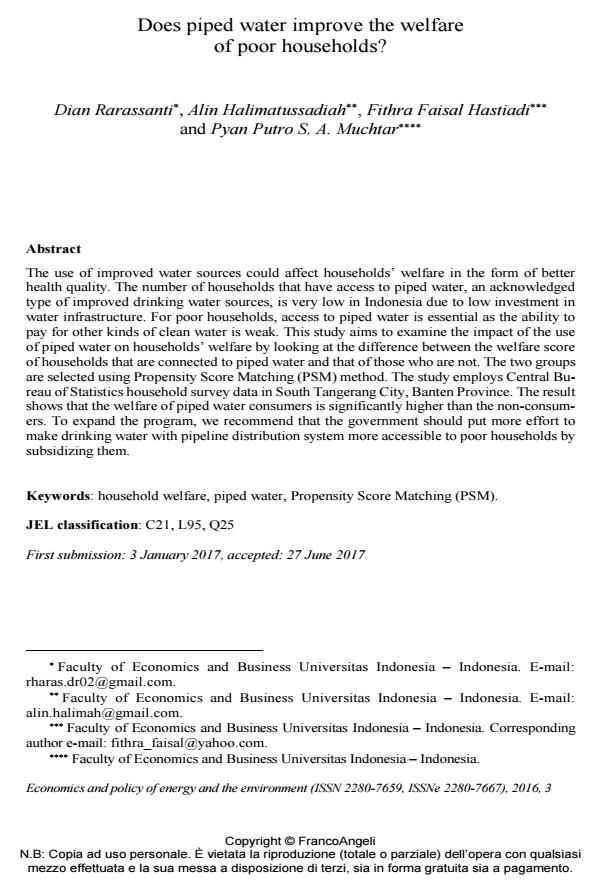Does piped water improve the welfare of poor households?
Journal title ECONOMICS AND POLICY OF ENERGY AND THE ENVIRONMENT
Author/s Dian Rarassanti, Alin Halimatussadiah, Fithra Faisal Hastiadi, Pyan Putro S. A. Muchtar
Publishing Year 2017 Issue 2016/3
Language English Pages 16 P. 119-134 File size 225 KB
DOI 10.3280/EFE2016-003010
DOI is like a bar code for intellectual property: to have more infomation
click here
Below, you can see the article first page
If you want to buy this article in PDF format, you can do it, following the instructions to buy download credits

FrancoAngeli is member of Publishers International Linking Association, Inc (PILA), a not-for-profit association which run the CrossRef service enabling links to and from online scholarly content.
The use of improved water sources could affect households’ welfare in the form of better health quality. The number of households that have access to piped water, an acknowledged type of improved drinking water sources, is very low in Indonesia due to low investment in water infrastructure. For poor households, access to piped water is essential as the ability to pay for other kinds of clean water is weak. This study aims to examine the impact of the use of piped water on households’ welfare by looking at the difference between the welfare score of households that are connected to piped water and that of those who are not. The two groups are selected using Propensity Score Matching (PSM) method. The study employs Central Bureau of Statistics household survey data in South Tangerang City, Banten Province. The result shows that the welfare of piped water consumers is significantly higher than the non-consumers. To expand the program, we recommend that the government should put more effort to make drinking water with pipeline distribution system more accessible to poor households by subsidizing them.
Keywords: Household welfare, piped water, Propensity Score Matching (PSM).
Jel codes: C21, L95, Q25
Dian Rarassanti, Alin Halimatussadiah, Fithra Faisal Hastiadi, Pyan Putro S. A. Muchtar, Does piped water improve the welfare of poor households? in "ECONOMICS AND POLICY OF ENERGY AND THE ENVIRONMENT" 3/2016, pp 119-134, DOI: 10.3280/EFE2016-003010